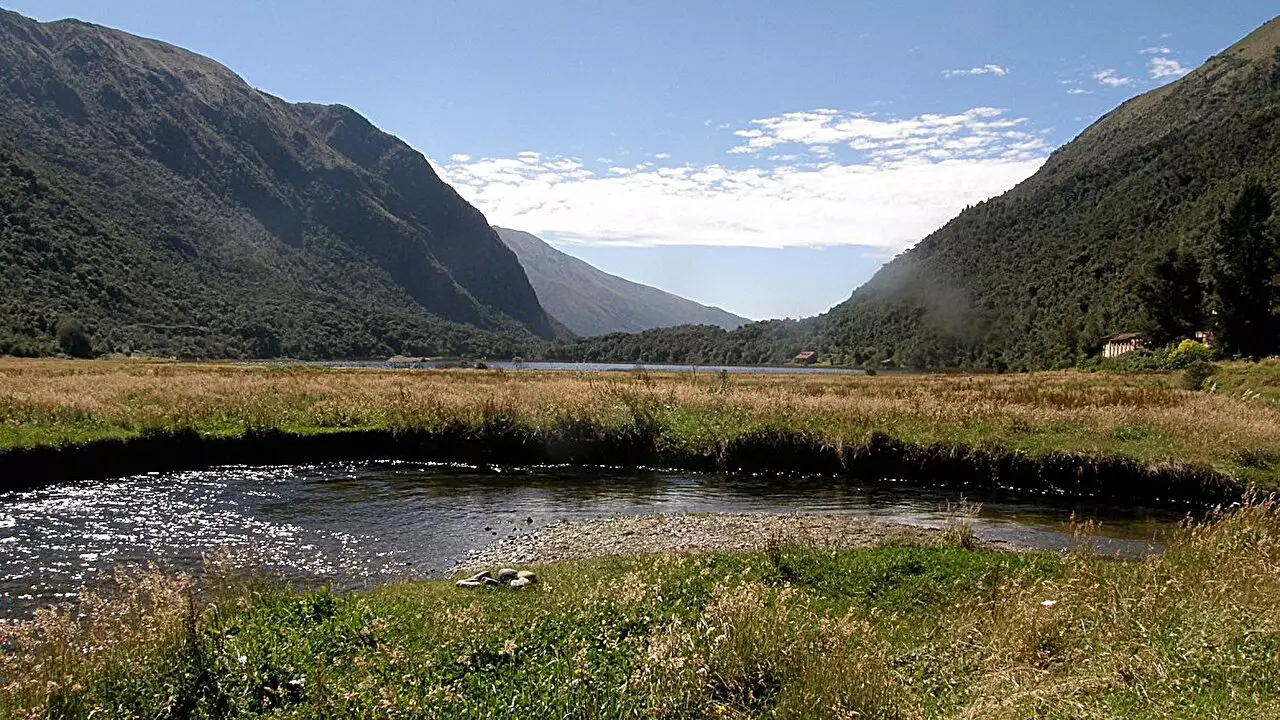The latest research on ancient temperatures and rainfall patterns in the tropical Andes of South America sheds light on the impact of carbon dioxide levels and ocean currents on climate history over the past 16,000 years. This comprehensive study, conducted by experts from Brown University, provides valuable insights into the driving factors behind temperature variations in the region and their wider implications for global climate change.
Contrary to traditional climate studies that focus solely on the Northern or Southern Hemisphere, this new research underscores the interconnectedness of distinct geographical regions and their influence on each other’s temperature and weather patterns. By examining sediment samples from Laguna Llaviucu in Ecuador’s Cajas National Park, scientists were able to establish a direct correlation between temperature fluctuations in the tropical Andes and global climate events, particularly those affecting Antarctica.
One of the key findings of the study was the significant role played by carbon dioxide concentrations in shaping temperature trends in the tropical Andes. Analysis of sediment samples revealed a strong correlation between temperature variations and fluctuations in CO2 levels, highlighting the pivotal influence of greenhouse gases on ancient climate patterns. This data supports previous research linking carbon dioxide to global temperature changes since the last Ice Age.
In addition to carbon dioxide, the study also brought to light the impact of ocean currents on regional climate changes. Specifically, the strengthening of northward currents during the Antarctic Cold Reversal 14,500 years ago led to a cooling effect in the tropical Andes, demonstrating how distant oceanic processes can have far-reaching implications on local temperature conditions. This highlights the complex interplay between global and regional climate systems.
To reconstruct past climate conditions with precision, researchers analyzed lipid biomarkers and hydrogen isotopes extracted from sediment samples collected at Laguna Llaviucu. These organic compounds allow scientists to infer past temperature and rainfall patterns, providing a sophisticated tool for creating a detailed timeline of climate changes spanning over 16,000 years. This innovative approach marks a significant advancement in the field of climatology, particularly in tropical regions.
Looking ahead, the researchers from Brown University plan to further investigate past temperature patterns in the tropical Andes, an area historically lacking comprehensive climate records. Their findings underscore the urgent need to monitor and mitigate climate change impacts in sensitive mountain environments, such as the Andes, which are projected to experience accelerated warming in the coming years. By expanding our understanding of ancient climate history, we can better anticipate and address the challenges posed by global environmental changes.
The study on climate history in the tropical Andes offers valuable insights into the complex relationships between carbon dioxide levels, ocean currents, and regional temperature variations. By leveraging advanced analytical techniques and interdisciplinary collaboration, scientists have been able to unravel key factors driving ancient climate patterns and their implications for future climate scenarios. This research underscores the interconnected nature of global climate systems and the need for sustained efforts to address environmental challenges on a regional and global scale.


Leave a Reply